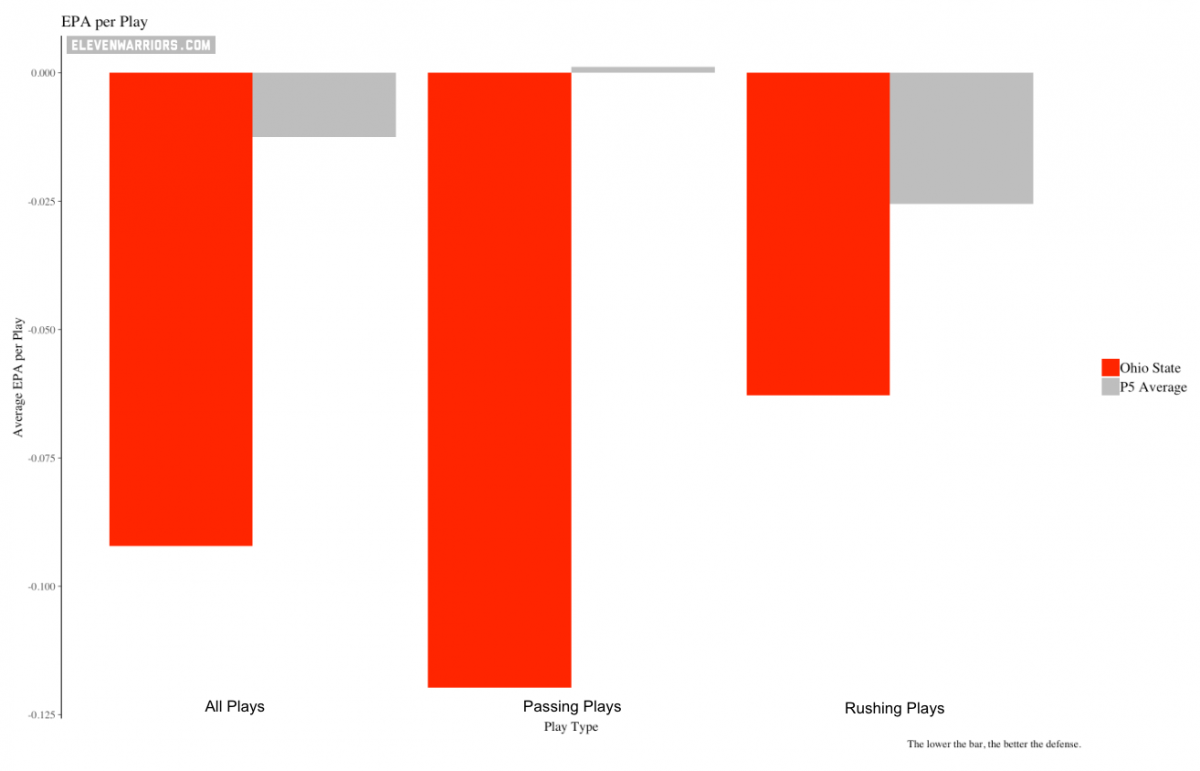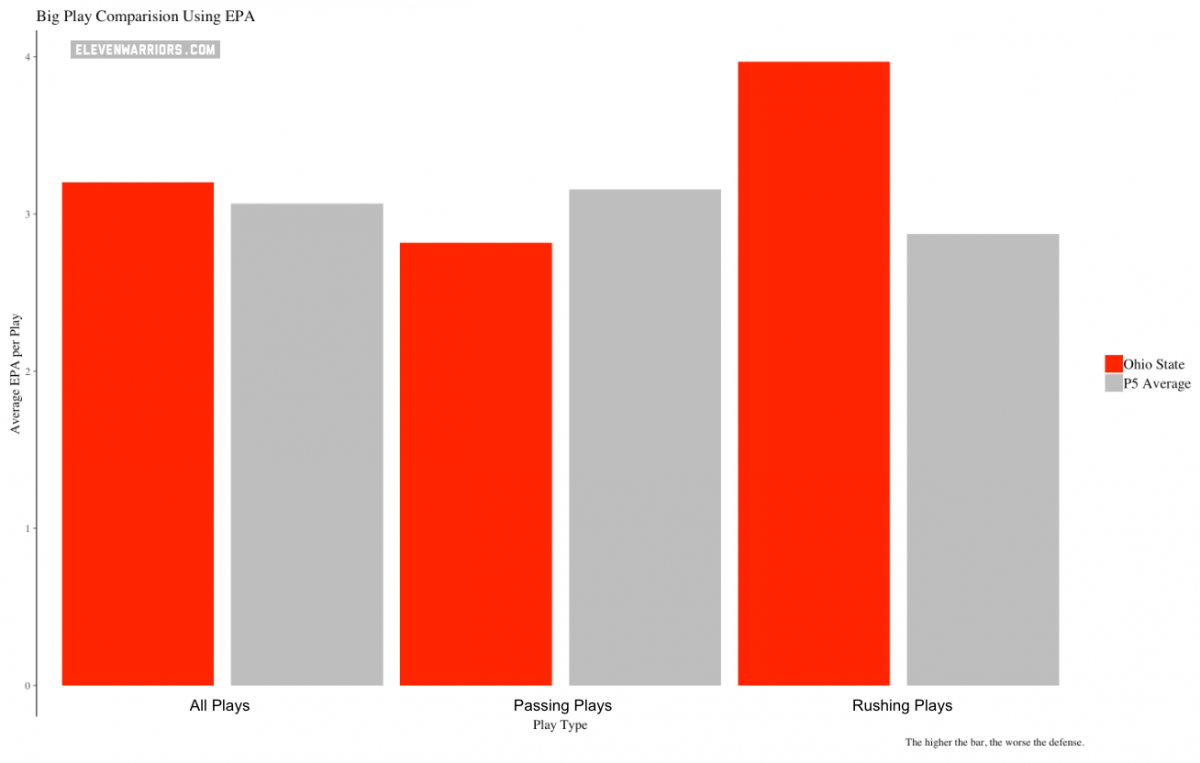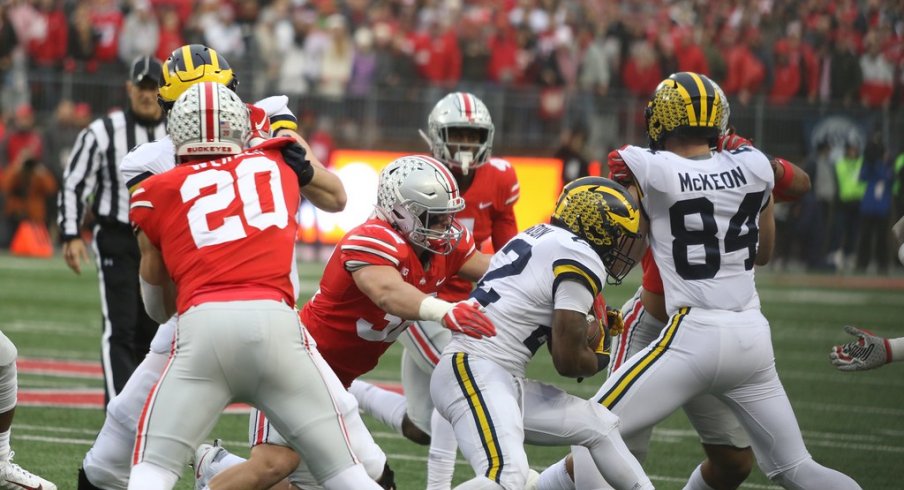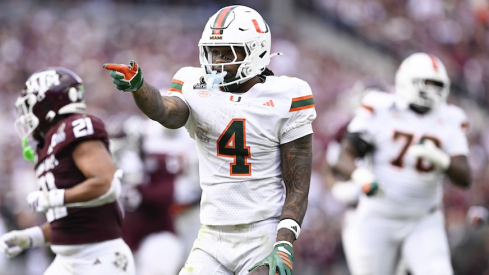Before the 2018 season, Ohio State's defense looked to be one of the best in the nation.
After giving up 31 points to opening-day opponent Oregon State, who would finish the season 2-10, some had their concerns but it was still not seen as a big deal. The defense progressively got worse, culminating in a 49-point collapse in Ross-Ade.
The coaching staff then stumbled upon Brendon White, who seemed to right the ship for the rest of the year.
By the end of the season, Ohio State's defense was not bad; it was average. For the Buckeyes, however, those two words mean the same thing.
Measuring a defense's performance is incredibly difficult. Points per game is one of the best metrics we have but it can not let us see the impact of individual events. By using expected points added (EPA), a metric that was introduced in last week's Data Points, we can see how the scarlet-and-gray performed on a play-by-play basis.
Ohio State's defensive play was slightly above the Power Five average with an EPA per play of -0.092. When classifying based on play type (run or pass), the strengths and weaknesses of the defense are clearly shown.

Despite beating the Power Five average in both categories, it is clear that the Bucks were much better at defending the pass than they were at defending the run.
These numbers can help give some idea on how Ohio State's defense performed on a play-by-play basis, but it is not really tangible. After all, what does -0.092 expected points per play really mean?
Instead, let's look at one of the Buckeyes' biggest issues from this past season: big plays. Ohio State was one of the worst teams in the nation in terms of giving up big plays, or gains of 20 yards or more. These plays are incredibly important and, as evidenced in Ohio State's games against Purdue and Maryland, can keep an otherwise deficient offensive team within striking distance.
The Bucks allowed 67 plays of 20 yards or more last season, bad enough for the 35th worst mark in the FBS. Not only did Ohio State allow more big plays, but they were also more negatively impacted by them as well.
The average big play by a Power Five team resulted in an EPA of 3.07 for the offensive team while the average big play against Ohio State's defense went for 3.20 EPA. To make matters worse, the Bucks were clearly deficient in a familiar category: stopping the run.

Big running plays against Ohio State averaged 3.97 EPA, more than a full point above the Power Five average. The secondary, on the other hand, did its job, beating the Power Five passing average by about 0.35 points.
After looking at this data, it can easily be said that Ohio State struggled against the run. But why?
For one, it took eight weeks and an embarrassing night in West Lafayette to find a safety capable of tackling in the open field. Isaiah Pryor and Jahsen Wint struggled immensely last season. White's emergence, coupled with Jordan Fuller's ability to play both safety spots, were integral to the minor success the defense had the rest of the way.
Second, and perhaps most importantly, these metrics bring up the linebacker unit. The corps was scrutinized all season long for its inability to run sideline-to-sideline, finish tackles, and overall poor play, all of which is evidenced by Ohio State's poor score in the above figures. The position group is still a major question mark as a coaching and scheme change may alter the rotation.
The Buckeyes' inability to stop the run and limit big plays were defining factors of its defense. These issues start and end with the linebackers, who must claim responsibility for these deficiencies. With a coaching change, the introduction of the Bullet, and younger players competing for reps, it should not come as a surprise if someone new steps on the field to command the defense.


